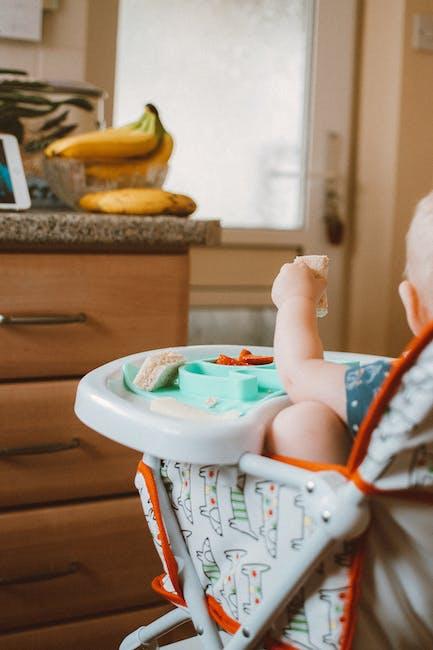Weaning your baby from a nipple shield can be a daunting experience, but it doesn’t have to be. With some patience and practice, you can help your baby transition from using the nipple shield to drinking directly from the breast. In this guide, we’ll discuss how to wean your baby from a nipple shield, including what to expect during the process and some tips for making the transition as smooth as possible.A nipple shield is a thin, silicone-based device that is worn over the nipple during breastfeeding. It helps to protect the nipple from irritation and is also used to aid latch-on in cases where the baby has difficulty latching due to an anatomical issue. Nipple shields are designed to be flexible and comfortable for both mother and baby.
Advantages of Using a Nipple Shield
Nipple shields are thin, flexible silicone covers that are placed over the nipple and areola during breastfeeding. They can be used to help a baby latch on properly and protect a sore or cracked nipple from further damage. Nipple shields offer many advantages, including helping to promote successful breastfeeding and providing extra protection to the nipples.
One of the primary advantages of using a nipple shield is that it can help improve latching for babies who have difficulty attaching to the breast. If a baby is having trouble latching, the shield can provide a larger surface area for them to latch onto, making it easier for them to draw milk from the breast. In addition, some babies may have difficulty latching on due to an anatomical issue or tongue-tie. The nipple shield can also help in these cases by providing an easier way for them to access the milk.
Another advantage is that they can provide extra protection for sore or cracked nipples while nursing. Breastfeeding can be uncomfortable when nipples are sore or cracked, but the shield provides an extra layer of protection against further irritation and damage. This can be especially helpful for mothers who are experiencing pain during nursing due to soreness or cracking.
Finally, nipple shields can also be used as a temporary solution if baby needs supplemental milk while breastfeeding. If mother is unable to produce enough milk to feed her baby, she may need to supplement with formula or donor milk until her supply increases. The shield provides an easy way for baby to access these additional sources of nutrition while still providing skin-to-skin contact with mother during feeding sessions.
Disadvantages of Using a Nipple Shield
Despite its many benefits, there are also some disadvantages associated with using a nipple shield while breastfeeding. One of the main drawbacks is that it may make it more difficult for mother and baby to establish an effective nursing relationship if used too often or incorrectly. If not used correctly, it could cause poor positioning which could lead to poor latch and ineffective feeding sessions which could cause low milk supply in mother’s breasts over time due to lack of stimulation and emptying out of her breasts during feedings.
The shield also makes it more difficult for mother and baby to establish skin-to-skin contact during feeds and could interfere with bonding between mother and baby as well as lead to problems such as decreased eye contact between them during feedings which is important in establishing trust between them.
In addition, if not used correctly or if left on too long after feeding sessions have ended, this could cause skin irritation on both mother’s nipples as well as her baby’s mouth due to prolonged contact with the silicone material on the shield itself.
Overall, using a nipple shield has its advantages and disadvantages but should only be used when absolutely necessary under the guidance of healthcare professionals such as lactation consultants so that proper technique is achieved as well as ensuring optimal health benefits for both mother and baby throughout their breastfeeding journey together!
How to Know if Your Baby is Ready to Wean from the Nipple Shield
Weaning your baby from the nipple shield can be a difficult process, but there are some signs that can tell you when your baby is ready. The most important sign that your baby is ready to wean from the nipple shield is when they have gained enough strength to latch onto the breast without it. If your baby is able to stay latched for at least 10 minutes without the shield, then he/she may be ready.
Another sign that your baby is ready to wean from the nipple shield is if they are able to take a bottle without it. When a baby can take a bottle without needing the shield, it shows that their mouth muscles and lips have grown and strengthened enough for them to be able to feed independently without assistance. If this happens, then you should consider weaning them off of it.
You should also look for signs of discomfort or distress when using the shield. If your baby seems uncomfortable or distressed while feeding with the nipple shield, then this could indicate that they are not yet ready to wean off of it. It’s important to remember that every baby’s development will be different and some may need more time than others before being able to feed without assistance.
It’s also important to remember that weaning off of any type of feeding aid should be done gradually and with patience. Taking too long or trying too hard could cause further discomfort or distress for both you and your baby during feeding time, so make sure you take things slowly and try not to push too hard for them to wean off of it until they are truly ready.
Overall, knowing when your baby is ready to wean from the nipple shield will depend on many factors such as their age, strength, and comfort level with nursing without assistance. As long as you keep an eye out for these key signs – gaining strength in latching onto the breast without assistance, taking a bottle independently, and showing no signs of distress – then you can have confidence in knowing when it’s time for them to start weaning off of their nipple shield.
Starting on Solid Foods
Introducing solid foods is an exciting milestone for babies. It can also be a bit daunting for parents who haven’t done it before. Here are some tips to help ease the transition for baby.
Start slowly by introducing one new food at a time. This will give you an opportunity to observe if your baby has any allergies or reactions to the food. Introduce each food slowly over several days, allowing your baby time to become accustomed to new flavors and textures.
It’s important to provide a variety of healthy foods for your baby’s developing palate. Try offering fruits, vegetables, whole grains and proteins, such as fish, eggs and tofu. Start with small amounts and gradually increase the portion size as your baby becomes more comfortable with solids.
It can be helpful to offer a variety of textures when introducing solid foods, such as mashed fruits and vegetables or soft-cooked grains like oatmeal and quinoa. You can also offer finger foods like pieces of cooked vegetables or fruit that your baby can pick up and feed themselves.
Finally, it’s important to provide a safe eating environment for your baby by ensuring their highchair is stable and secure and that all foods are cut into pieces that won’t pose a choking hazard for your little one. With these tips in mind, you can help make the transition from purees to solids an enjoyable experience for both you and your baby!
Step-by-Step Guide on How to Wean Baby from Nipple Shield
Weaning your baby from a nipple shield can be a challenging but rewarding process. It takes time and patience, but the results are worth it. Here is a step-by-step guide on how to wean your baby from a nipple shield:
First, talk to your pediatrician or lactation consultant about the best way to wean your baby from the nipple shield. They can provide advice and support for a successful transition.
Second, gradually introduce a cup or bottle for some feedings. This will help your baby become familiar with different feeding methods and get used to not using the nipple shield.
Third, take it slow! Don’t expect your baby to give up the nipple shield right away. It may take several weeks before they are completely weaned off of it. Go at their pace and don’t be discouraged if they don’t seem ready yet.
Fourth, give lots of praise and encouragement when they do use other feeding methods without the nipple shield. Positive reinforcement is key in helping them become comfortable with new ways of feeding.
Fifth, keep trying! Don’t give up if it seems like your baby is not making progress. With patience and persistence, you will eventually see results.
Weaning your baby from a nipple shield can be difficult, but following these steps will help make it easier. With time and dedication, you can get through this process together!

Signs That Your Baby is Not Ready to Wean from Nipple Shield
Nipple shields are a great tool for helping a baby to latch on and for providing extra comfort during breastfeeding. However, once the baby is ready to wean, it’s important to do so as soon as possible. If you’ve been trying to wean your baby off the nipple shield but have noticed that they resist your attempts, then it’s likely that they aren’t quite ready yet. Here are some signs that your baby may not be ready to wean from the nipple shield:
1. Your baby is still actively sucking on the shield and seems reluctant or resistant when you try to remove it.
2. They become frustrated or agitated when you try to take the shield away, even if only for a few minutes at a time.
3. They seem uncomfortable when breastfeeding without the shield and are unable to latch on properly without it.
4. They show signs of fatigue or distress while breastfeeding without the shield, such as fussing or crying.
5. They seem unwilling or disinterested in trying other methods of feeding such as bottles or cups.
If your baby doesn’t seem ready to wean from the nipple shield just yet, don’t worry; this is normal and many babies take longer than expected before they are completely comfortable with nursing without one. Be patient with your little one and continue working together towards weaning off the nipple shield at a pace that works best for both of you!
The Best Time to Try Weaning Off the Nipple Shield
Weaning off the nipple shield can be a difficult process for both mom and baby. It is important to know when the right time is to begin this process so that it is successful. The best time to try weaning off the nipple shield is when baby has good breastfeeding skills, is gaining weight well, and when he/she has established a strong breastfeeding relationship with mom.
It is also important for mom to be feeling confident and comfortable in her breastfeeding abilities before attempting to wean off of the nipple shield. If she feels any discomfort or pain while feeding or notices any signs of latch difficulty, it may be best to wait until these issues have been addressed before attempting weaning.
Once it’s determined that baby and mom are both ready for weaning from the nipple shield, it’s important for mom to remain patient during this process. She should take her time and gradually transition away from using the shield with each feed until it’s no longer necessary at all. This process could take days or even weeks, depending on how quickly baby adjusts and learns how to latch without the aid of a shield.
It can also be helpful for mom to pump her breast milk prior to each feed in order to soften the nipples and make them more pliable. This will help make latching easier with or without a shield. Additionally, moms should make sure that their positioning during feeds is comfortable and secure so that baby can get a good latch more easily.
Overall, the best time for moms to try weaning off of the nipple shield is once they have established a strong breastfeeding relationship with their baby, they feel confident in their abilities as a mother, and baby has demonstrated good latching skills without needing assistance from a shield. With patience, consistency, and dedication from both mom and baby, this process can be successful!
When Should You Seek Professional Help?
There are times when it is beneficial to seek professional help for managing your mental health. If you are feeling overwhelmed, struggling with depression, or having difficulty managing stress, these can all be signs that it’s time to reach out for help. Other warning signs include changes in sleeping and eating patterns, decreased motivation, and feeling isolated or disconnected from others.
If you’re finding it hard to cope with everyday life tasks, talking to a mental health professional can be beneficial. They can help you develop skills and strategies to better manage your mental health and emotions. A professional can also provide support and guidance as you work through difficult experiences or challenging situations.
It is also important to seek professional help if you are experiencing thoughts of self-harm or suicidal ideation. These thoughts should never be ignored and should be taken seriously. If you have any thoughts of harming yourself or ending your life, please contact a mental health professional right away for support and assistance.
Sometimes it can feel uncomfortable seeking professional help for mental health issues; however, it can be one of the most important steps in taking care of yourself and maintaining good mental wellbeing. Don’t hesitate to reach out if you need support; there is no shame in seeking help from a qualified professional.

Conclusion
Weaning your baby from a nipple shield is possible and can be done gradually with patience and consistency. It’s important to remember that a nipple shield is a useful tool, but should be used as a short-term solution. To ensure success, you should seek the advice of a lactation consultant or other health care professional who can provide guidance and support throughout the weaning process. It’s also important to remember that each baby is different and may need more or less time to get used to nursing without a nipple shield.
It’s normal for the weaning process to take several weeks or even months, so try not to rush it. During this time, you should remain patient and consistent in order to ensure success. With the right support and guidance, you can help your baby transition away from using a nipple shield and onto nursing without one.




